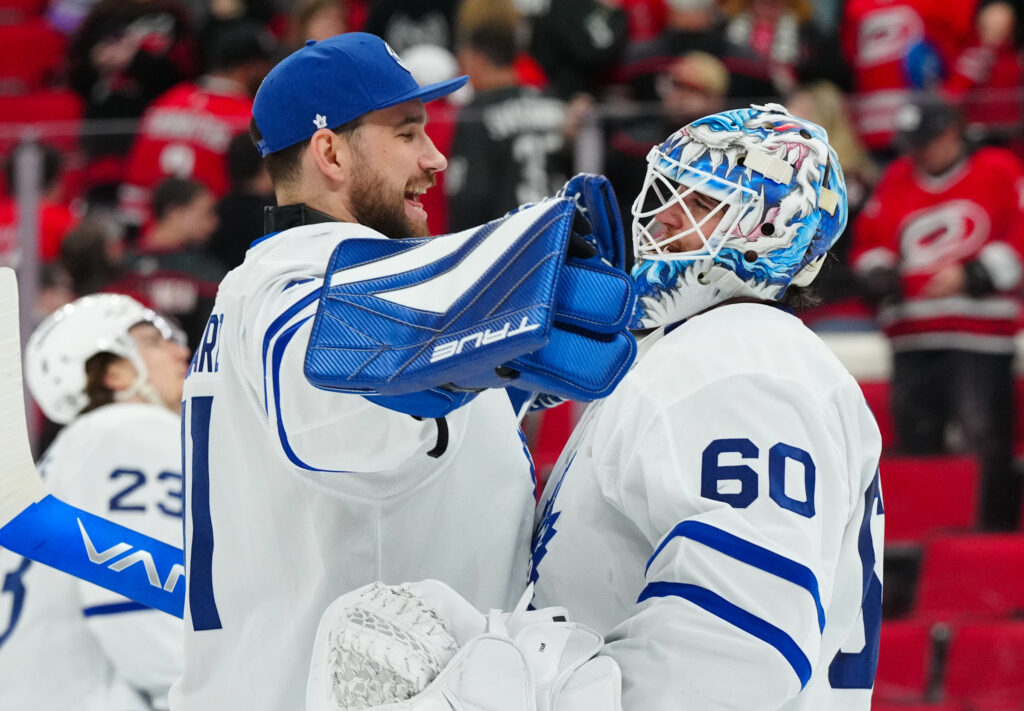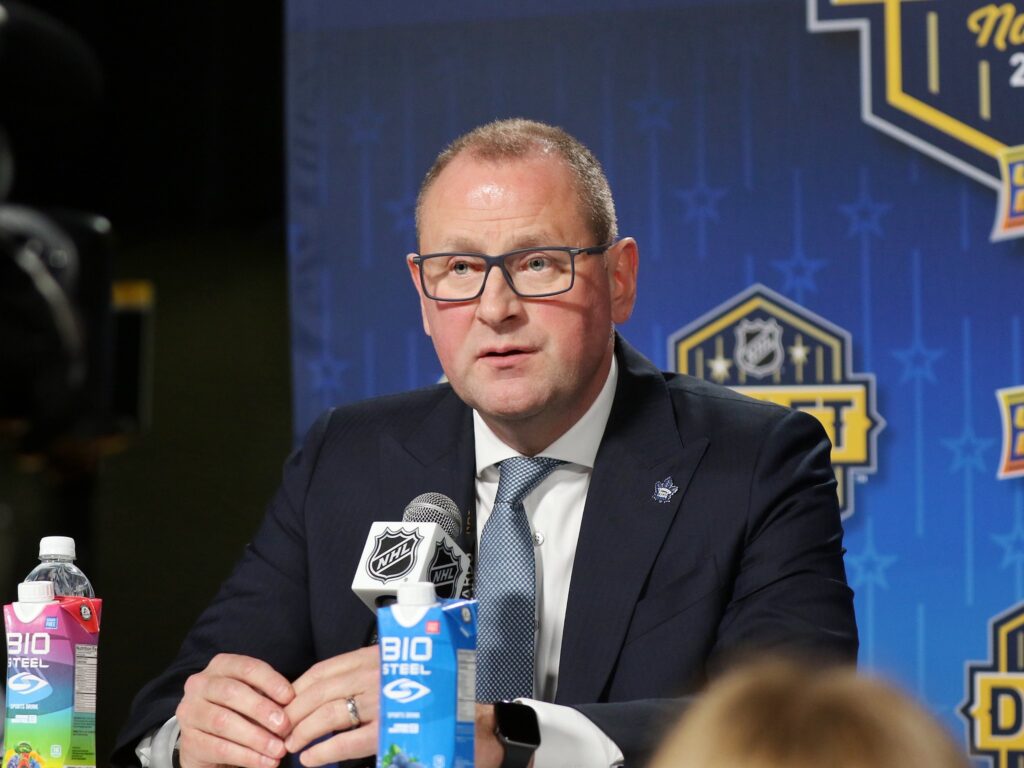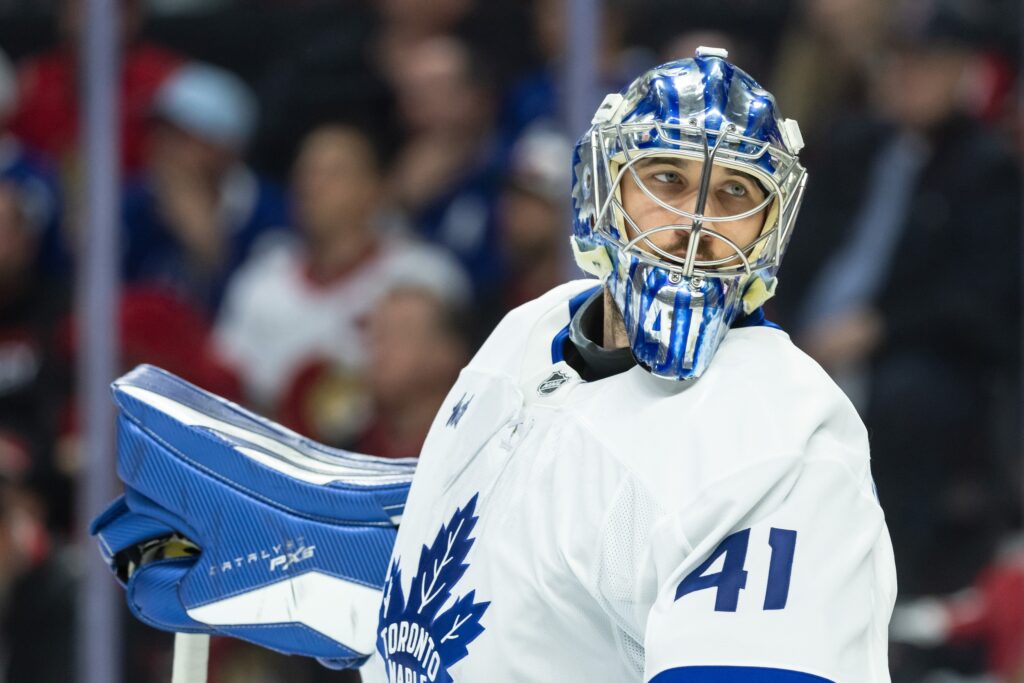The Toronto Maple Leafs enter the preseason with Stanley Cup aspirations shimmering on the horizon, but a crucial piece of their foundation remains unsettled. While the skaters are dialing in their systems, General Manager Brad Treliving is locked in a negotiation that will define the team’s financial flexibility and goaltending stability for years to come. The man at the center of it all, Anthony Stolarz, is coming off the best season of his career and is looking to cash in. The question echoing through the halls of the Scotiabank Arena is simple, yet profound: What is a league-leading save percentage worth?
Alson on the EDGE – Key Maple Leafs Under the Microscope Going into 2025-26 Training Camp
A Race Against the Clock
Publicly, the tone from management is one of measured optimism. Treliving has confirmed that discussions with Stolarz’s agent, Allain Roy, are active and have been for some time. He describes the process as a “back and forth” and hopes for a “good outcome” in “short order.” However, those familiar with the rhythms of NHL contract talks know that such phrases can often mask significant distance between two parties. Insider reports suggest that while talks are ongoing, there is still “plenty of work to be done” before anyone is shaking hands.
The pressure is not just coming from the front office. Stolarz himself has drawn a line in the sand. Having established himself in Toronto, he has made his desire to stay abundantly clear, stating he’d like to get a deal done “as soon as possible.” More pointedly, he has expressed a strong desire to have his future secured before the puck drops on opening night, October 8. For Stolarz, this isn’t an ultimatum but a practical matter; he wants to avoid the persistent distraction of playing out a contract year. Some believe he is unwilling to let negotiations bleed into the regular season, turning this soft deadline into a firm one. The clock is officially ticking.
From Journeyman to Jackpot: Stolarz’s Unprecedented Leverage
To understand why these negotiations are so compelling, one must appreciate the tectonic shift in Anthony Stolarz’s career trajectory. For years, he was viewed as a capable but injury-prone journeyman, a reliable backup who could fill in but was never the long-term answer. Last season, he didn’t just shed that label; he obliterated it.
In his first year wearing the blue and white, Stolarz was nothing short of a revelation. He posted a sterling 21-8-3 record, but the underlying numbers were even more impressive. His 2.14 goals-against average (GAA) and a league-leading .926 save percentage were elite by any measure. To put that in perspective, his save percentage edged out that of Vezina and Hart Trophy winner Connor Hellebuyck (.925).

This wasn’t just a regular-season fluke. Before an injury cut his postseason short in the second round, Stolarz backstopped the Leafs to a first-round victory over the Ottawa Senators, going 4-2 with a respectable 2.21 GAA. His performance earned effusive praise from those who matter most. Treliving lauded the tandem of Stolarz and Joseph Woll as a “backbone” for the team and “as good… as there was in the league.” Veteran teammate Oliver Ekman-Larsson was even more direct, calling Stolarz “one of the best goalies in the league.”
For the first time in his career, Stolarz is negotiating from a position of immense strength. His primary goal, in his own words, is “just getting paid fairly” through a deal that helps the team but also reflects their belief in him.
Deconstructing the Dollars and Term
While both sides are motivated to find a resolution, the devil is, as always, in the details. The sticking points appear to be the familiar duo of term and average annual value (AAV).
Most analysts converge on a likely term of three or four years. A five-year deal is considered a long shot, primarily due to Stolarz’s injury history, which includes midseason knee surgery and a concussion last season. The Leafs’ management will be wary of committing long-term to a 31-year-old goaltender, regardless of how brilliant his most recent season was.
The real debate centers on the AAV. Initial speculation placed Stolarz’s potential earnings in the lofty $5 to $6 million range. However, more recent analysis from insiders like Chris Johnston suggests a figure closer to the $4 million mark. The logic is that his AAV would need to come in slightly above his tandem partner Joseph Woll’s $3.67 million, but that breaking the $5 million barrier might be a bridge too far for the Leafs.
Stolarz’s camp is undoubtedly armed with a list of comparables. Spencer Knight’s three-year, $5.83 million AAV deal is a high-water mark. More realistically, contracts like Kevin Lankinen’s (five years, $4.5 million AAV) and Karel Vejmelka’s (five years, $4.75 million AAV) likely form the basis of their argument. Knight’s contract, in particular, is seen as a key benchmark that could set the market, and you can be certain Allain Roy is leveraging it in every conversation.
Also on the EDGE – Mapping Out the Toronto Maple Leafs’ 2025-26 Trade Landscape
The View from the Front Office and the Free Agency Gamble
From Toronto’s perspective, the ideal scenario is to lock in their elite goaltending tandem for a combined cost that provides excellent value against a rising salary cap. Keeping the duo of Stolarz and Woll at a total cap hit of around $8 or $9 million would be a masterstroke of roster management. It would allow them the flexibility to continue surrounding their star-studded core with quality depth.

However, they must weigh Stolarz’s spectacular platform year against the risk posed by his medical file. Furthermore, with Woll signed for three more seasons and promising prospect Dennis Hildeby developing in the system, the Leafs have options. This doesn’t mean Stolarz is expendable, but it does give Treliving a degree of leverage he wouldn’t otherwise have.
This brings us to the ultimate endgame. If a deal isn’t reached before Stolarz’s deadline, he could choose to bet on himself. By replicating last season’s success, he would enter the 2026 offseason as arguably the top goaltender on the open market—a market not expected to be flush with elite options. In that scenario, his value could soar even higher, potentially pricing him out of Toronto entirely. It’s a fascinating game of contractual chicken, with the Leafs’ championship window hanging in the balance. For now, the fans wait, hoping the price of excellence is one the Maple Leafs are willing to pay.
Created with the aid of Gemini AI
